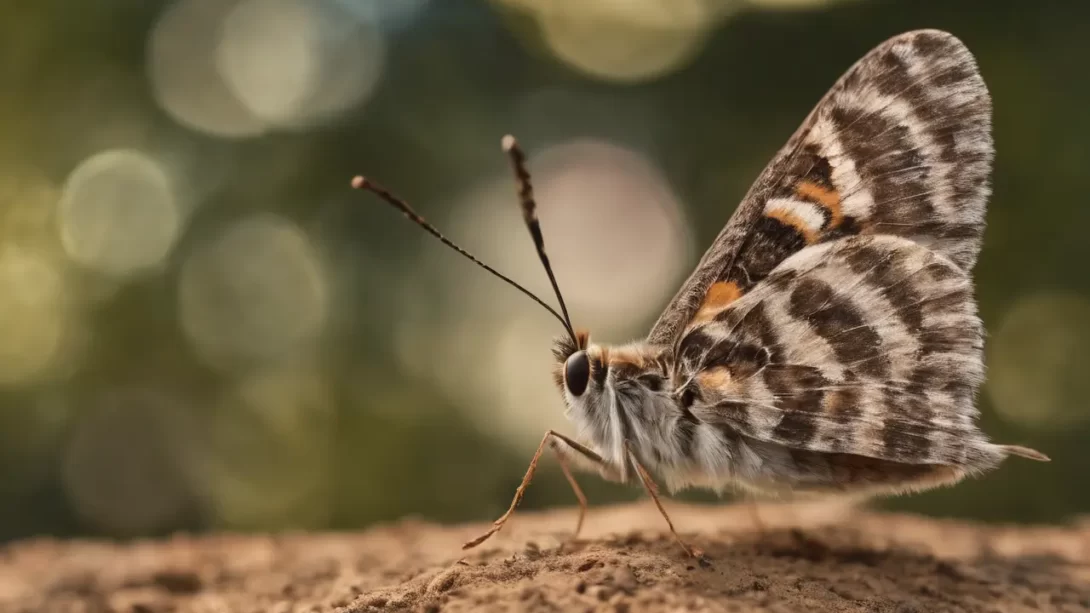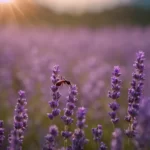Moths, often associated with nighttime and warm seasons, have a life cycle and behaviors that vary dramatically with the changing seasons. As temperatures drop and winter approaches, these creatures adopt different strategies for survival. This article delves into the fascinating world of moths during the winter months, exploring how these insects navigate the challenges of colder weather.
Moths
Moths, belonging to the order Lepidoptera, are close relatives of butterflies but with some distinct differences. They typically have a more robust body and less colorful wings compared to butterflies. Moths undergo a complete metamorphosis, transitioning through four life stages: egg, larva (caterpillar), pupa, and adult. This life cycle plays a crucial role in how they adapt to seasonal changes, particularly winter.
Moth Behavior in Different Seasons
Moths exhibit varied behaviors across different seasons. In spring and summer, they are most active, engaging in feeding, mating, and laying eggs. During these warmer months, food sources are plentiful, and conditions are ideal for growth and reproduction. As fall approaches, moths begin preparing for the colder months ahead, triggering a shift in their behavior and physiological responses.
Moth Survival Strategies in Winter
The primary challenge for moths during winter is the scarcity of food and the harsh environmental conditions. To survive, moths employ one of several strategies depending on their species:
- Overwintering as Eggs: Some moths lay eggs that are able to survive through the winter, hatching when conditions become favorable again in spring.
- Larval Hibernation: Many moth caterpillars overwinter in this stage, often burrowing into the ground or hiding in crevices to escape the cold.
- Pupal Diapause: Certain moths spend the winter as pupae, a stage where they are inactive and encased in a protective cocoon.
- Adult Survival: A few moth species, particularly those in milder climates, can survive as adults. These moths find shelter and enter a state of reduced metabolic activity.
Each of these strategies is a unique adaptation to the environmental constraints posed by winter, illustrating the diversity and resilience of these insects.
Hibernation and Dormancy
Moths utilize forms of hibernation and dormancy to conserve energy during the cold months. Hibernation in moths, particularly in the larval or pupal stages, involves entering a state of deep rest, slowing their metabolic rate significantly. This process, known as diapause, is a form of dormancy that is not just a response to cold but is often a genetically programmed part of their life cycle. Unlike true hibernation seen in some mammals, moth diapause can be a flexible state, allowing them to become active again if conditions temporarily warm up.
Moth Adaptations to Cold
To survive the winter, moths have developed several physical and behavioral adaptations. One remarkable adaptation is the presence of antifreeze proteins in some species, which prevent the formation of ice crystals in their body fluids, allowing them to withstand freezing temperatures. Additionally, fat storage is crucial for moths overwintering in all life stages, providing the necessary energy reserves to survive without feeding. Finding shelter is another key adaptation; moths often seek refuge in places like under bark, in leaf litter, or in man-made structures to escape the worst of the winter weather.
Impact of Climate and Environment
The specific winter survival strategies of moths are greatly influenced by their climate and environment. In regions with mild winters, some moths remain active throughout the year. In contrast, those in colder climates have more pronounced diapause phases. The local environment also plays a role; for instance, moths in urban areas might find warmer microclimates, allowing for greater winter activity. Understanding these climatic and environmental impacts is key to comprehending the broad range of survival strategies employed by moths in winter.
Moths and Ecosystems in Winter
Even in their dormant state, moths play a significant role in winter ecosystems. As a food source, overwintering larvae and pupae provide essential nutrition for birds and other wildlife that remain active through winter. In turn, this supports the biodiversity and balance of the ecosystem. Additionally, the activities of moths during the winter, albeit limited, contribute to the pollination of certain winter-blooming plants, showcasing their importance beyond the warmer months.
Post-Winter Recovery
As winter gives way to spring, moths begin to emerge from their dormant states. This transition is often synchronized with environmental cues like temperature changes and increasing daylight hours. The revival of moth activity in spring is a critical period for their life cycle, as they resume feeding, mating, and, for some, completing their metamorphosis into adults. This period is also crucial for the regeneration of moth populations, affecting their distribution and abundance in the coming year.
Conservation and Climate Change
The survival strategies of moths during winter have implications for conservation. Understanding these strategies is important for protecting moth species, particularly those that are endangered or threatened. Additionally, climate change poses new challenges; warmer winters and changing environmental conditions can disrupt the natural cycles of moths, potentially affecting their survival and ecological roles. Conservation efforts need to consider these changes and their impact on moth populations.
Conclusion
Moths exhibit a remarkable array of strategies to survive the harsh conditions of winter. From hibernation and dormancy to specialized adaptations like antifreeze proteins, these insects demonstrate incredible resilience. Their role in winter ecosystems, though less visible, remains vital. As the seasons change, the reemergence of moths symbolizes the renewal and ongoing cycle of life in nature. Understanding and appreciating these winter strategies of moths not only enhances our knowledge of these fascinating creatures but also underscores the importance of conserving the delicate balance of our ecosystems.




